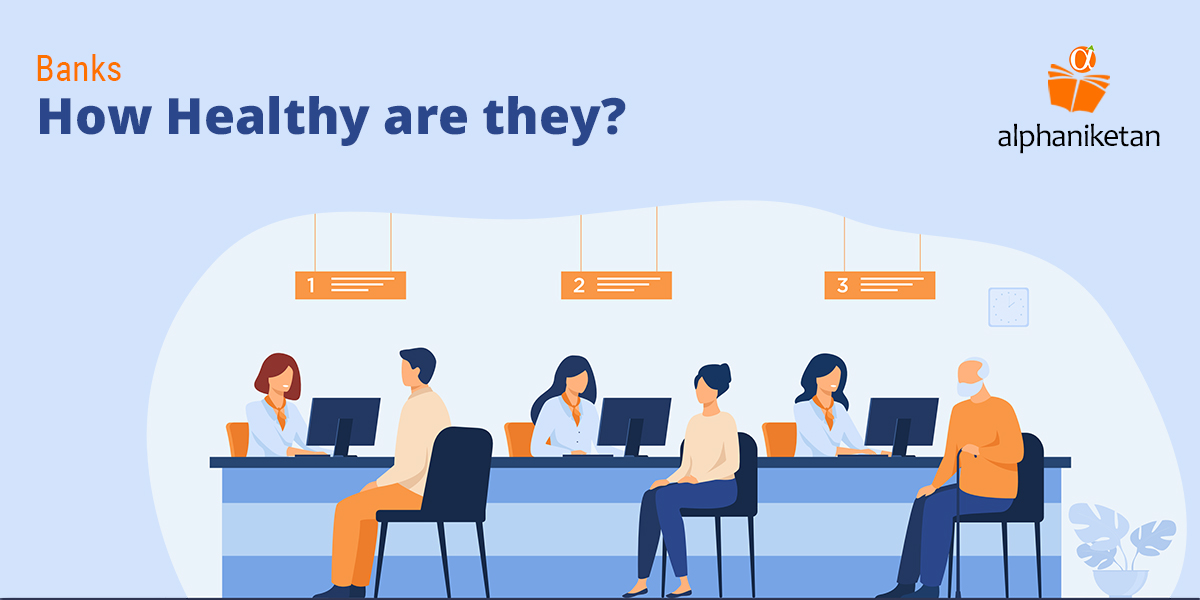In any economy, banks play an important role.
They serve as water to seeds of impressive and profitable ideas which blossom and usher growth and prosperity. In fact, the extent of business in banking sector is indicative of an economy’s health. For a growing economy like India, banking sector assumes greater significance given its pivotal role in reviving the economy. In this context, it is important to understand how healthy are India’s banks to withstand the demand-destructive impact of the widespread of the Coronavirus.
Let us understand this in detail:
Since the widespread of the Coronavirus in India, banking has been one of the early sectors which faced a potential and immediate slump in business. Increasing job losses made the business situation more adverse. Job losses resulted in lower income. This increased possibilities of defaults on repayments on existing loans. Besides this, the outlook for consumption and demand for credit in the near future seemed bleak. No wonder share price of banks and non-banking financial companies (NBFC) were under pressure. The Nifty Bank TRI went down to 22739 on March 23, 2020 from 43223 on December 31, 2020. Among the mutual funds sectoral schemes, banking funds were the worst performers as funds lost 11.39% in the present calendar year, according to Value Research. Also recently, small-sized bank Lakshmi Vilas Bank merged with DBS Singapore. On the whole, these facts may indicate the sector is facing a huge crisis. But this is a notion of skeptics and naysayers.
One of the prompt measures of Reserve Bank of India of moratorium on equated monthly installment was a step in the right direction to save the sector from any potential collapse. Nonperforming Assets (NPAs) were recognized in a slower manner. Besides this, the Supreme Court ordered all banks not to classify Covid-19-related defaults as NPA till further notice. RBI also announced several measures including one-time restructuring (OTR) of loans which helped partly mitigate the Covid-19 impact. To a certain extent, there were a few concrete signs of improvement in key business variables of banks.
Recoveries have been improving. Value of gross NPA of private sector banks stood at Rs 1.87 lakh crore at the end of the quarter ended September 2020 compared to Rs 1.88 lakh crore at the end of quarter ended September 2018. In the same period, the value of gross NPA of public sector banks fell to Rs7.9 lakh crore from Rs9.9 lakh crore. This improvement in asset quality was on account of recoveries by banks on large corporation accounts. Also the gross NPA ratio— a ratio that gives the relation between the total gross NPA to total advances (loans) of the bank—for public sector banks and private sector banks stood at 9.3% and 4.9% respectively at the end of September 2020 quarter. Two years ago, in the same quarter, the gross NPA ratio for public sector banks and private sector banks stood at 13.6% and 5.9% respectively. Besides this, banks’ loan loss provisions—funds set aside from current earnings in anticipation of probable losses—also came down. RBI had asked banks to make additional 10% provisions over a period of March and June 2020 quarters. Even after considering this, provisions in banking sector have come down to 0.53 lakh crore at the end of the quarter ended September 2020 compared to Rs 0.7 lakh crore two years ago in the same quarter.
Also the crucial question of availability of capital to banks has been addressed to a certain extent in recent months. RBI had prohibited banks from declaring dividends with a view to conserve capital. RBI also deferred implementation of the rule of maintaining capital adequacy ratio at 11.5% to April 1, 2021 from September 30, 2020. These two measures have helped banks in maintaining adequate capital. Banks also have been able to raise adequate amount of capital. Three private sector banks—Axis, ICICI and Kotak managed to raise Rs 32,000 crore. Even the beleaguered Yes Bank raised Rs15,000 crore through a follow on offer. Public sector banks such as State Bank of India and Punjab National Bank have also raised additional capital to the tune of Rs 16,500 crore. Thanks to the Emergency Credit Line Guarantee Scheme (ECLGS) from the government and falling interest rates, bank credit as on October 23, 2020 stood at a robust 103.4 lakh crore compared to 97.7 lakh crore in September 2019.
Though these statistics hold the promise of slow but definite improvement in business in the banking sector, it will be too early to pronounce that the sector is out of the woods. In the coming quarters, the movement of NPA must be monitored. Also the sector’s litmus test of revival and resilience will begin once RBI turns off its tap of liquidity. Presently, the banking sector has 35% weight in the Nifty 50 index. This cannot be overlooked. Hence, it is important for investors to understand they remain selective about their investments in the sector. This includes sticking to the big players as relatively smaller players make all efforts to revive and survive.
Thank you for reading this post, don't forget to subscribe!




